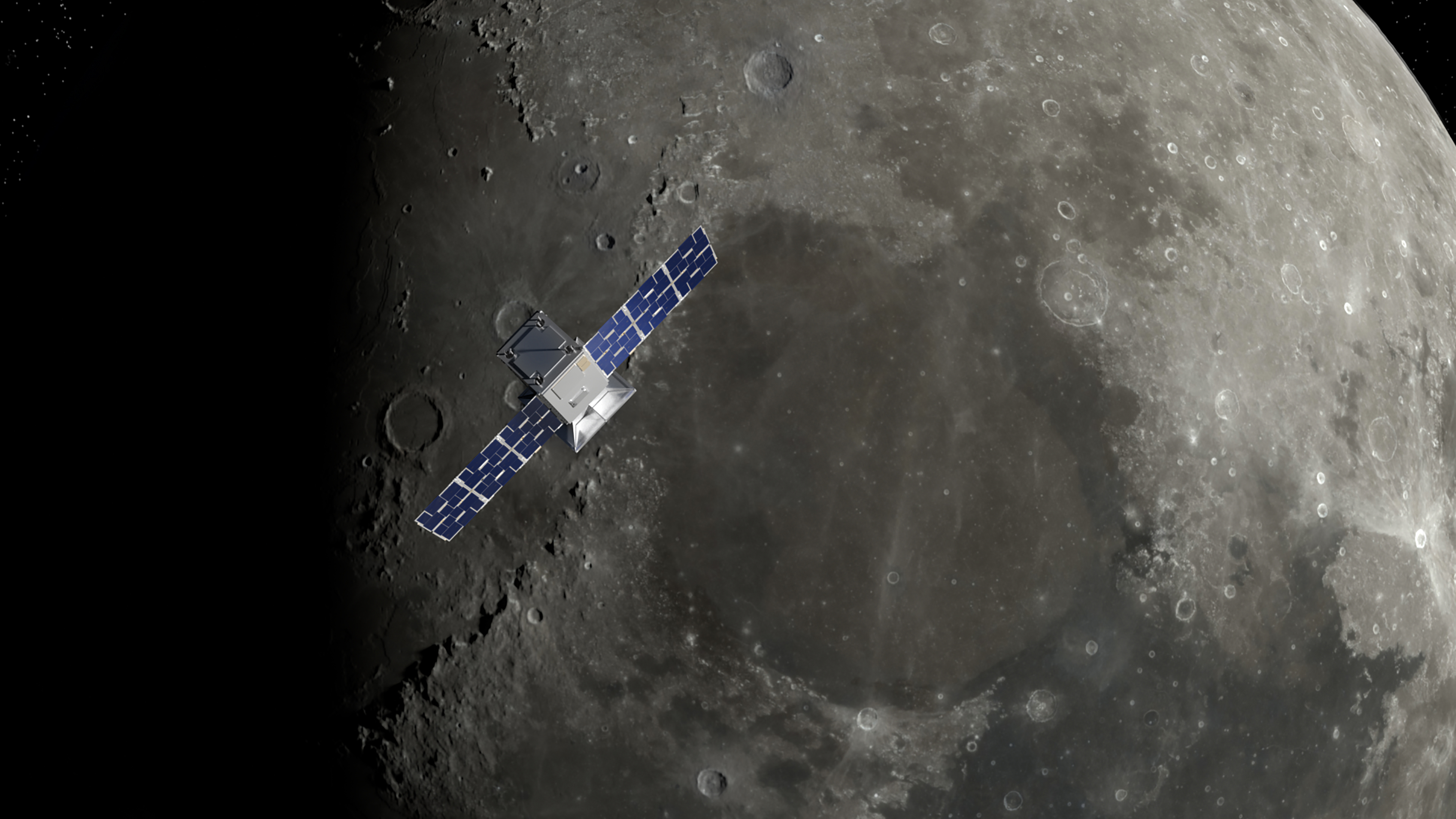NASA's CAPSTONE cubesat reaches final orbit around the moon

NASA's tiny CAPSTONE spacecraft has settled into its final lunar orbit, shifting into the operational phase of its pioneering moon mission.
CAPSTONE, which is about the size of a microwave oven, arrived at the moon on Nov. 13, becoming the first cubesat ever to do so. The probe soon performed two engine burns to refine its orbit and has now embarked on its six-month mission at the moon, NASA officials announced on Monday (Nov. 21)
That mission centers on validating the presumed stability of a lunar near-rectilinear halo orbit, a highly elliptical path that will also be used by Gateway, the small space station that NASA plans to build as part of its Artemis program.
"Missions like CAPSTONE allow us to reduce risk for future spacecraft, giving us a chance to test our understanding and demonstrate technologies we intend to use in the future," Jim Reuter, associate administrator for NASA's Space Technology Mission Directorate, said in a statement.
Related: Why it took NASA's tiny CAPSTONE probe so long to reach the moon
CAPSTONE will also test two new technologies that could help future moon probes determine their position in space more independently. One is a chip-scale atomic clock and the other is navigation software developed by Advanced Space, the Colorado-based company that owns CAPSTONE and is operating it for NASA.
CAPSTONE (short for "Cislunar Autonomous Positioning System Technology Operations and Navigation Experiment") launched atop a Rocket Lab Electron booster on June 28.
Breaking space news, the latest updates on rocket launches, skywatching events and more!
The liftoff sent CAPSTONE on a circuitous, highly fuel-efficient trek to the moon, which didn't go perfectly smoothly.
For example, CAPSTONE lost contact with its handlers on July 4, shortly after the cubesat separated from Rocket Lab's Photon spacecraft bus. The moon probe also began to tumble and went into a protective safe mode during an engine burn on Sept. 8.
But the mission team solved both of those problems, getting CAPSTONE to its destination and setting it up for the work to come.
"We have been working to this point since we started the company over 11 years ago. Getting into this orbit at the moon validates so much hard work and grit by the combined CAPSTONE mission operations team," Bradley Cheetham, principal investigator for CAPSTONE and CEO of Advanced Space, said in the same statement.
"The capabilities we have demonstrated and the technologies still to be matured will support future missions for decades to come," he added.
Mike Wall is the author of "Out There" (Grand Central Publishing, 2018; illustrated by Karl Tate), a book about the search for alien life. Follow him on Twitter @michaeldwall. Follow us on Twitter @Spacedotcom or Facebook.

Michael Wall is a Senior Space Writer with Space.com and joined the team in 2010. He primarily covers exoplanets, spaceflight and military space, but has been known to dabble in the space art beat. His book about the search for alien life, "Out There," was published on Nov. 13, 2018. Before becoming a science writer, Michael worked as a herpetologist and wildlife biologist. He has a Ph.D. in evolutionary biology from the University of Sydney, Australia, a bachelor's degree from the University of Arizona, and a graduate certificate in science writing from the University of California, Santa Cruz. To find out what his latest project is, you can follow Michael on Twitter.
